Nature is beautiful, it is awesome, and it is sometimes utterly terrifying. Most of us, now, love and appreciate nature and are fully aware of its power as well as its transcendental qualities. I love to walk in nature, love the cherry blossoms of spring, love the flow of rivers, the jagged thrill of mountains, and the sea of green fields laid out across the countryside like a patchwork quilt of love.
But now, more than ever, our relationship, us humans, with nature is in crisis. In fact, it has become a dysfunctional relationship with one party (us) constantly taking from, abusing, and diminishing the other (nature). During Nature and Us:A History Through Art (BBC4/iPlayer), James Fox takes us on a journey not just through such countries as China, India, Japan, Egypt, Guatemala, USA, and Ukraine but also through the history of our relationship with nature.
The history of our relationship with nature through the prism of art. With the aid of sociology professors, archaeologists, biodiversity professors, directors of the V&A, Buddhist monks, landscape photographers, indigenous Samis, ethnobotanists, and the cognitive psychologist Steven Pinker, Fox makes it abundantly clear that though we rely on nature for our survival, nature too relies on us.
Chauvet cave art (c.37,000-28,000BC)
It is a symbiotic relationship and it is one we would be foolish to take for granted. During the last ice age, nature was most certainly something we did not take for granted. It was something we, our ancestors, feared. Humans took refuge in caves where they made surprisingly detailed images of bison, rhinos, bears, horses, bulls, reindeer, mammoths, and (above) lions.
It was proof of the human interaction with nature, with the animal kingdom, but it was also early evidence that we could do something no other animal could. We could make art.
In these artworks, we show how we kill animals - for food, for our own safety, but we also show how we revere, and fear, animals. Animism is a belief that all creatures (as well as mountains, rivers, and even rocks) have a soul. It began as an attempt by humans to understand nature, to imbue nature with spirituality. In some ways, to tame its wildness and its unpredictability.
Those beliefs faded when animals were first tamed into livestock and seeds were first planted. In Central America, the Mayan civilisation farmed maize (as, in Guatemala, they still do) and on the banks of the Nile, centuries before the pyramids were built, art was made about the cultivation of crops and the taming of animals.
Ancient Egyptian art (date unknown)
They made beer and bread. The two main staples of my diet still today! The dawn of agriculture radically changed our relationship with nature but it also affected our culture. It created a psychological shift in which we were no longer equal with the animals but instead their masters.
This created the hitherto impossible circumstances for humans to settle in one place. Larger numbers of people all in one place led to a a greater exchange of ideas and soon cities, like Tikal in Guatemala (below) - a place I was fortunate enough to visit back in 2006, began to appear all across the planet.
Tikal Temple I (c.732AD)
Hun Hunaphu figurine (date unknown)
Maize was, by now, considered so important to the Mayans that they created a maize god, Hun Hunaphu, and made sculptures of him to worship. Humans were even sacrificed to Hun Hunaphu in a quid pro quo deal for plentiful future maize supplies.
As cities grew, hierarchies emerged and those at the the top of those hierarchies often had no need to work. They began to see nature as something that was 'outside'. Outside of the cities and outside of their lives. Demarcations were made between the human sphere and the natural sphere.
But, of course, nobody told the natural world, nobody told the animals. In the Assyrian capital Nineveh, King Ashurbanipal was tormented by lions encroaching on the human sphere and eating domesticated livestock such as sheep and cattle. As well as children.
To rid Nineveh of this leonine scourge, Ashurbanipal instigated public lion hunts and even commissioned sculptures to celebrate their success but it was undoubted that in creating a permanent home for civilisations, the advent of agriculture had not solved the problem of humans being at the mercy of nature.
Panel from the North Palace of Ashurbanipal (date unknown)
Tied to specific locations, it wasn't just lions that people had to worry about. They were now, more easily than ever, at the mercy of bandits, climate, and, very topically, infectious diseases.
Entire civilisations, like the Maya, simply collapsed and, for their time, huge cities were completely abandoned. Where this early form of civilisation had failed to solve people's needs, early religions began to fill the void and the first of those, at least the first still widely recognised today, was Hinduism.
Hinduism made no distinction between humanity and nature and their deities often did the same. Hanuman was part human, part monkey, Hans a swan, Nandi a bull, and Vishnu can appear with anything up to sixteen arms and personifies creation in its entirety. Ganga is the goddess personification of the Ganges river and is worshipped by Hindus, most famously in Varanasi.
Hanuman (date unknown)
Vishnu (date unknown)
Statue of Zeus (1c AD)
In Greece, too, nature was also transformed into a panoply of deities. Apollo was the god of sun, Poseidon the god of the sea, and Gaia the god of Earth. All of the Greek gods were ruled over by Zeus, the god of the sky.
But the anatomy of the Greek gods, most unlike the Hindu gods, is very human. Right down to their willies. It was an early pivot away from the worship of nature and towards the worship of humanity. That idea was taken much further when a new religion emerged. A religion that had just one god. A god called God.
The Christian god God is said to have made us mere mortals in his own image and to have sacrificed his only son, a chap called Jesus Christ who you may have heard of, so that we should live. Christianity was, and is, at heart a death cult.
Raphael - The Mond Crucifixion (1502-03)
The most famous Christian painting was made hundreds of years after Christ had died and thousands of miles away too. In Renaissance Italy, Piero Della Francesca shows us Jesus being baptised in the river Jordan and Raphael shows Jesus being crucified atop the hill of Golgotha in Jerusalem.
Both these paintings still contain nature but that nature has now been diminished, rendered as background. In the Christian world view, nature is there to serve us and passages in the Bible explicitly inform us that the Earth is ours and in the twisted words of American right wing commentators like Ann Coulter that means we should "be fruitful, multiply, and rape the planet".
This zero sum game view of nature (either we destroy it or it destroys us) is, thankfully, not the only way of looking at the natural world though - and it wasn't back then either. During the reign of the Song dynasty in China (960-1276) sophisticated city dwellers would visit the great outdoors as they felt communion with nature was beneficial.
By the time of the Ming dynasty (1388-1644) this had extended to climbing mountains and getting lost in the forests in an attempt not just to appreciate nature but to understand it. Of course, creating images of nature was part of this and China saw the world's first ever landscape painters appear.
Sesshu Toyo - Autumn Landscape (1420-1506)
Dai Jin - untitled (1388-1462)
Inspired by Daoism, a cosmic understanding of everything, artists like Dai Jin and Sesshu Toyo placed humans and nature peacefully balanced in harmony. In Japan, this belief was picked up on by Zen Buddhist monks who created, and still do, minimalist gardens of gravel and rock. Gardens of infinity.
In China and Japan, as elsewhere, philosophical beliefs did not always translate to behaviour but on the other side of Asia there had emerged another new religion that held quite different views towards nature than the Daoist/Buddhist acceptance of it.
When Islam first appeared in the Arabian peninsula in the 7th century it sought to 'solve' the problems of nature and it was decreed that no human must attempt to recreate nature (including, of course, the human body) in the form of painting, drawing, or sculpture. Instead it must be reflected in architecture, gardens, ceramics, and rugs that celebrate the divine beauty of nature without attempting to replicate it.
The Ardabil Carpet (mid-16c)
Friday Mosque of Herat, Afghanistan (1200-2000)
In many ways, the birth of abstraction. The first six centuries of Islam, between the eighth and fourteenth centuries, saw scholars interrogate every aspect of nature and the huge breakthroughs that were made in the fields of mathematics, astronomy, medicine, optics, and anatomy saw this period labelled the Islamic Golden Age.
With the rise of Genghis Khan and the Ottoman conquest of the Arabic speaking middle East, as well as with internal divisions about taking a more fundamental approach to Islam, the Golden Age fizzled out across most of the Islamic world but in the sixteenth and seventeenth century it continued in Persia under the reign of the Mughal emperor Jahangir.
Jahangir was fascinated with both art, and architecture, and nature and he had court painter Ustad Mansur capture the likeness of the animals in his own personal zoo for pleasure and posterity. There were Siberian cranes, hornbills, zebras, a wonderful chameleon, and even a dodo.
Ustad Mansur - Zebra (1621)
Ustad Mansur - Chameleon (c.1612)
Ustad Mansur - Birds (including dodo) (1628-33)
Seemingly, Jahangir and Mansur had found some wriggle room around the Islamic diktat that nature must not be replicated. Eventually, Europeans caught up with, and overtook, Islamic scholars. Copernicus proposed an idea of the Earth revolving around the sun rather than vice versa, Galileo developed and improved the theories of Copernicus, and the polymath Leonardo da Vinci defined for all time the meaning of the term 'Renaissance Man' by being as adept at painting as he was at engineering and science.
He even invented the helicopter - although it would be a few hundred years before one took to the skies. Isaac Newton discovered gravity and Robert Hooke pioneered microscopy and coined the word 'cell' but Nature and Us focuses on a less celebrated figure from the era.
Maria Sibylla Merian (1647-1717) had been obsessed with plants and insects all her life and in 1699 she travelled to Dutch Surinam to study the region's insects and other bugs and draw, for the first time ever, entire ecosystems. They are really quite beautiful.
Maria Sibylla Merian - Caterpillars (1679)
Maria Sibylla Merian was part of a larger impulse to understand the entirety of the natural world during the Age of Enlightenment. As the major European powers began to colonise the globe, botanical art found itself everywhere. The Swedish botanist Carl Linnaeus boldly announced a project to classify all living things on the planet!
The increased understanding of nature led to Europeans, specifically wealthy Europeans, beginning to reshape the natural world, to bend it to their will. Aristocrats remodelled their estates to resemble the paintings of Claude Lorrain and other artists painted wealthy aristos standing proudly with their livestock.
Claude - Landscape with Ascanius Shooting the Stag of Sylvia (1682)
George Stubbs - Whistlejacket (c.1762)
The equine painter George Stubbs didn't even bother with the owners. Or even a background. Which, in a way, is quite telling. Whistlejacket was a racehorse owned by the Marquess of Rockingham. A pure bred Arabian stallion, Whistlejacket was the product of centuries of breeding. Breeding controlled by humans.
Whistlejacket is nature not as nature intended but as man desired and man's desires, around the time that Stubbs painted Whistlejacket, were being sated in ways never previously imagined possible. The Industrial Revolution created, from natural sources like coal and even water, the modern world we would all go on to live in.
This created the possibility, and the certainty, of huge increases of human population and it is only in recent years we have come to realise the danger of our actions from the late eighteenth century onwards. At least most of us. There were some dissenters at the time.
In the early nineteenth century, romantics like Byron, William Blake, and Caspar David Friedrich didn't see nature as something to be tamed or even to be observed as much as something they were part of. They saw emotion in landscape and perhaps none more so than Joseph Mallord William Turner (1775-1851).
Caspar David Friedrich - Wanderer above the Sea of Fog (1818)
J.M.W. Turner - Norham Castle, Sunrise (c.1845)
J.M.W. Turner - Valley of Aosta:Snowstorm, Avalanche and Thunderstorm (1836-37)
J.M.W. Turner - Snow Storm:Steam-Boat off a Harbour's Mouth (c.1842)
The story, apocryphal some suggest, that the then 67 year old Turner told about his making of 1842's Snow Storm has the artist tied, intentionally, to the mast of a steamboat during a storm for four hours. Something that may easily have cost him his life. If that's true or not, we'll never know, but we do see how Turner painted not only what nature looked like but what nature, in all its power, felt like.
Steamboats were, at the time, at the forefront of new technology and were seen as yet one more example of man conquering and overcoming nature but in Turner's work do we see nature taking her revenge?
Even more so than the coastal waters around England, the romantic vision of nature and its awesome potential could be observed in the vast landscapes of the unspoiled American west. This new Eden captured the imagination of a generation of American painters who, like Turner, were in thrall to its beauty and its sheer size.
Not just painters. The new invention of photography led to men like Carleton Watkins heading out West to record it. Watkins fell in love with the California landscape and, specifically, the remote Yosemite Valley and his photos of Yosemite so impressed President Abraham Lincoln that, during the middle of the American Civil War - in June 1864, he signed a motion to preserve the landscape that made Yosemite the first protected landscape not just in America but in the world.
Carleton Watkins - Bridal Veil Falls (1851-1916)
Carleton Watkins - View from Inspiration Point (1879)
Eight years later, Yellowstone (covering parts of Wyoming, Montana, and Idaho) became the nation's first National Park. For white America, these national parks became part of America's psyche, part of America's story, part of what America stood for even. Part, perhaps, of its manifest destiny.
But for native Americans, the creation of these national parks was not such a positive story. Many had lived on, and with, the land for generations and now found themselves either evicted to create the parks or, in some cases, executed.
The more fortunate ones found themselves in reservations or in cities and it is cities that Fox looks at during the final hour of Nature and Us. What cities mean for nature, what cities mean for art, and what cities mean for us. They make us, as a species, feel more powerful than ever and now more of us, than ever, live in cities we feel, Fox proposes, more detached than ever from nature.
With this, I had an issue with Fox. I live in a city (London) now and I experience nature (via my walks, organised or otherwise) far more than I did when I lived in a village (Tadley in Hampshire, now admittedly a small town) and almost everyone there goes everywhere in cars. Nature is something they look at through a window of an automobile and, to me, that's only half experiencing nature. You have to feel the rain, the cold, the snow, the sun on your face, the mud on your boots to really be in nature.
But maybe that's just me. Cities, of course, are not a new invention. They have existed for a very long time. But modern megalopolises with millions of people like London, New York, and Shanghai (just to give three examples) only really started to appear about a century ago and, of course, painters became fascinated by them almost immediately.
Giacoma Balla - Speeding Automobile (1912)
Claude Monet - The Gare Sainty-Lazara:Arrival of a Train (1877)
Camille Pissarro - The Boulevard Montmartre at Night (1897)
Painters painted cars, trains, streetlights and other examples of the modern city while architects set about building skyscrapers that would transform our vision of the world and, for a while, almost sideline nature. Take, for example, the Dutch artist Piet Mondrian and what happened with his art in just one decade at the start of the last century.
Mondrian increasing felt a desire to remove nature from art and, with his own art, began a process of slowly doing that until by the time of 1921's Tableau I (the kind of work we now associate Mondrian with it) his work appeared completely abstract. Perhaps in fear that there was still some remnant of nature in there, Mondrian avoided the colour green completely and he even took this 'against nature' approach into his home life.
Piet Mondrian - Spring Sun:Castle Ruin:Brederode (1909-10)
Piet Mondrian - Tableau I (1921)
He would only allow plastic flowers in his house and those he would insist on painting white. There was a widely held belief at the time that we were entering a transformative Utopian time, a future of machine led progress, and nature would either be left behind, put to our use, or simply ignored.
The American documentary photographer Margaret Bourke-White, like so many pioneering women throughout history she has until recently been rendered a more marginal figure than is fair, was quite a character. She used to climb skyscrapers to take photos from the top, she was torpedoed as a war snapper, and, most importantly of all to our story, was the first Western photographer allowed into the Soviet Union.
In her 1931 book, Eyes on Russia, she showed how the USSR was modernising and industrialising and she saw in the humble tractor the future of human progress. She went as far as calling tractors the new Gods of Russia.
Margaret Bourke-White - Eyes on Russia (1931)
Margaret Bourke-White - Dnieper River Dam (1931)
Elsewhere, she oversaw the construction of huge dams that literally stopped the natural flow of water. Human progress, in the USSR, the US, and elsewhere, looked unstoppable but we now know, of course, or at least most of us - Ann Coulter still doesn't get it, that we went too far.
When did we first start to learn this lesson? Many would point to the atomic bombs that fell on Hiroshima and Nagasaki in Japan in August 1945 killing somewhere between 129,000 and 226,000 people in total and razing, almost completely, two entire cities
J. Robert Oppenheimer, "the father of the atomic bomb", on witnessing the death and destruction he had played such a great part in enabling looked back to Vishnu and the Bhagavad-Gita and quoted it:- "now I am become death, the destroyer of worlds". But while Oppenheimer, and others in America - though certainly not everyone, wrestled with their demons - in Japan they created art, of sorts, from the wreckage.
Robert Smithson - Spiral Jetty (1970)
James Turrell - Skyspace (date unknown)
It was art that put our experience as people on the planet in perspective in the same way that the photographs of the Earth taken from space did so. It was humbling, in a way, to know how insignificant as individuals each of us really are. In the great spaces of nature, our true size is revealed and it's freeing for that to happen.
But while as individuals we are small, mere specks, as a species we are enormous. Since the 1970s the human population on Earth has doubled and some argue we now live in a post-nature age. Not that there is no nature left on Earth. Far from it. But that all nature on Earth, ALL of it, has now been touched by the hand of man.
The Canadian photographer Edward Burtynsky shows this better than almost anybody. His huge pieces. his 'manufactured landscapes', show not just how nature has been altered by man but how so much of it is in danger of being destroyed by man. Or already has been.
Edward Burtynsky - Anthropocene:The Human Epoch (2018)
Edward Burtynsky - Anthropocene:The Human Epoch (2018)
Burtynsky's photographs look at copper and phosphate mines, shanty towns, and other examples of man made landscapes in nature. Often the men, and even the tools they have created to do their work, are dwarfed by nature (you have to squint to find them) but the nature is also dwarfed by the damage that man has done to it.
It's a cry for help that is not dissimilar to the one we hear Greta Thunberg and so many others now making. But will we listen? The next chapter in the relationship between nature and us will involve the rise of AI. The important question, and one in which the answer is far from certain, is will we use AI to help us solve these problems of our own creating or will we use it to make them worse?
Luke Jerram - Gaia (2021)

















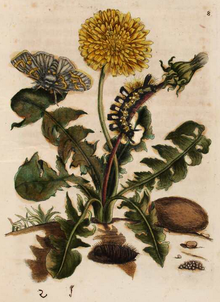








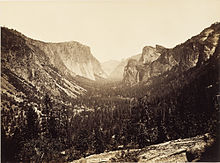
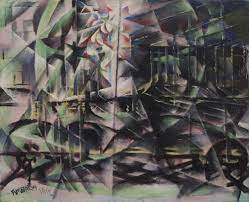







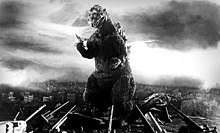


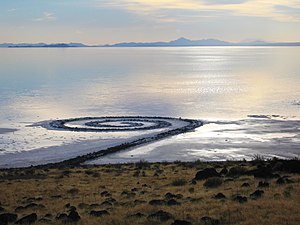
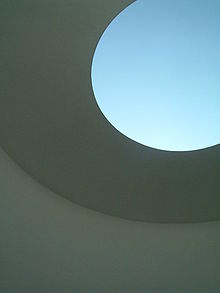




No comments:
Post a Comment